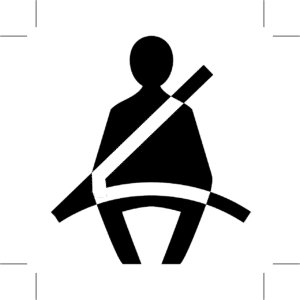
Since the creation of the first pickup trucks and later SUVs, the United States has quickly embraced the convenience and power of these vehicles. To be sure, the Wall Street Journal reports that in December 2014 alone, sales of SUVs and light trucks exceeded those of cars by more than 150,000.
However, with the advantages offered by the power and utility of an SUV or light truck come with the dangers and risks of rollover crashes, which are more frequent in accidents involving vehicles with a higher center of gravity.
Given the safety advantages inherent to larger vehicles such as SUVs and trucks, does the increased likelihood of a rollover accident necessarily mean you’re more at risk to catastrophic injuries and death? Do the large bodies of these vehicles protect drivers and passengers in the event of a single-vehicle wreck?
Rollover Accidents and SUVs/Trucks
What exactly is a rollover accident? As mentioned above, this type of accident generally involves a vehicle with a higher center of gravity; this vehicle weight distribution can lead to the vehicle flipping onto its roof and with enough momentum can carry the rotation back to the vehicle’s wheels. In some instances, the car can flip, or roll, multiple times in a single accident. According to a safety website presented by the federal government, a variety of factors contribute to rollover accidents, including speed, alcohol, and location; the site also declares that vehicle type also plays a part, and that rollovers are more common in single-vehicle accidents.
A rollover crash may seem like a catastrophic accident, but are rates of serious injury and death significantly higher in these single-vehicle wrecks? According to the National Highway Transportation Safety Administration (NHTSA), rollover accidents strongly contribute to the number of deaths attributable to vehicle crashes. More specifically, while only 2.1 percent of the 9.1 million car crashes in 2010 involved a rollover, this type of wreck accounted for nearly 35 percent of all accident-related deaths throughout the entire year. Clearly, rollover accidents must pose certain dangers to both the drivers and passengers involved, though, this doesn’t take into consideration the increased speeds necessary to cause a car to roll over.
Why Are Rollover Accidents so Dangerous?
The statistics make a compelling case that rollover accidents contribute to a higher probability of serious injury or death. With the advent of new safety technologies, as well as stronger cars that are better equipped to protect vehicle occupants in the event of a crash, why are rollovers so catastrophic? The answer may, in fact, involve widespread lack of seatbelt use. An April 2002 technical report published by NHTSA concluded that out of the group of rollover accidents studied, nearly three-fourths of occupants killed in these crashes were not using safety restraints, and approximately two-thirds were ejected from the vehicle. This shows that while SUVs and other vehicles with a higher center of gravity may be more likely to be involved in a rollover, the actions or in-actions of the drivers and passengers may be responsible, at least partially, for the fatalities that result. Another contributing factor is the speed at the time of collision necessary to cause a rollover; rollover accidents are generally more severe in nature as low-speed accidents are unlikely to cause a vehicle to roll over.
Have You Been Involved in a Car Crash?
In some cases, however, the design of an SUV or pickup truck, or even the actions of other drivers, may contribute to a serious rollover crash. If you have been involved in a rollover accident, please contact us today at Tate Law Offices, P.C., for help. Our car accident attorney will advocate on your behalf to maximize your potential compensation. Reach out to us today at 888-565-7068 for a free initial consultation.
Not Ready to Chat? Use these Resources:
- Car Accident Lawyer in Dallas, Houston, and Ft. Worth
- What To Do After A Car Accident in Texas
- Maximize Your Case Value In Your Texas Injury Claim
- How to Deal with Insurance Companies After a Ft. Worth Car Accident
- Should You See a Doctor After A Texas Car Accident?
- How Do You Get a Rental Car After a Car Accident?
- What are Common Car Accident Injuries?
- Get a Free Case Review in Dallas, Houston, or Ft. Worth
- Insights to Understanding Car Insurance in Texas
- Picking the Right Texas Car Accident Attorney
- Texas Car Accident FAQs
- Texas Car Accident Legal Resources

Tim received a business degree in finance from Southern Methodist University and a Juris Doctor (law degree) from South Texas College of Law. Over the last two decades Tim has represented victims of injuries day-in and day-out throughout the state of Texas as well as in numerous other states throughout America. Tim’s mission on every case is always to get the insurance company of the defendant to pay top dollar for his client’s case, which allows his clients to put the maximum amount of money into their pocket.



